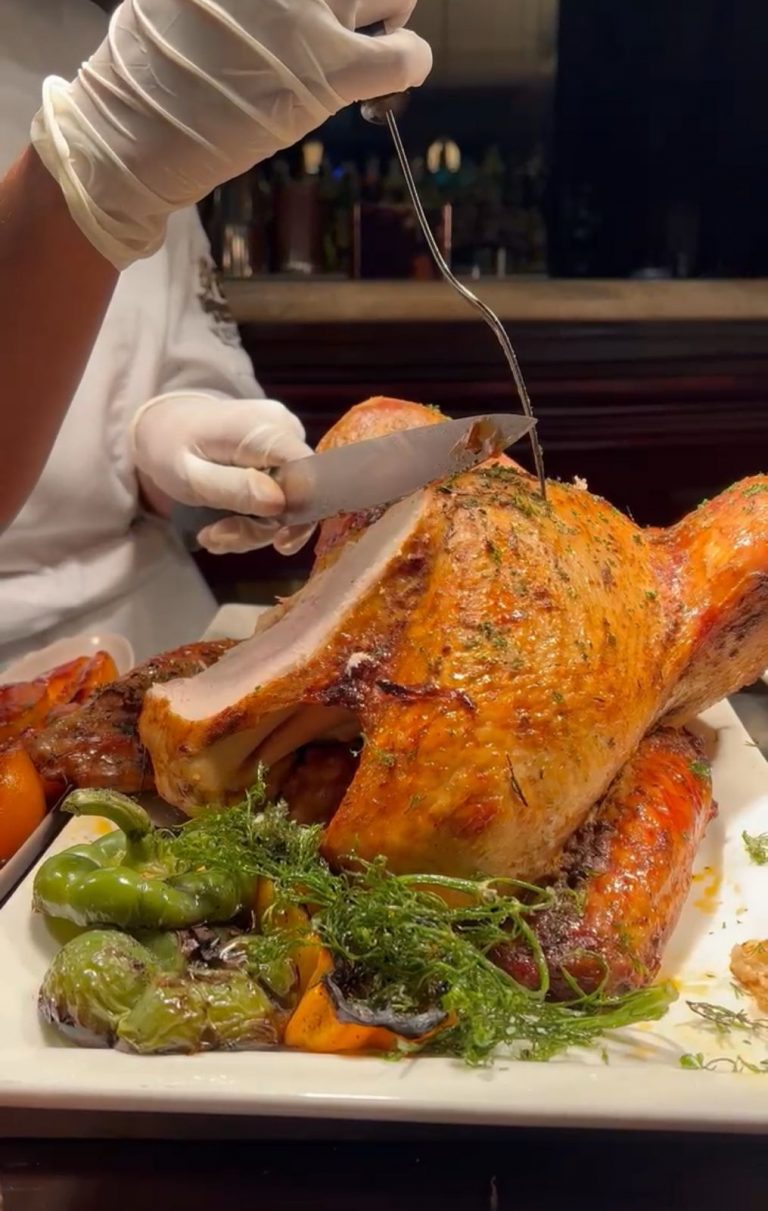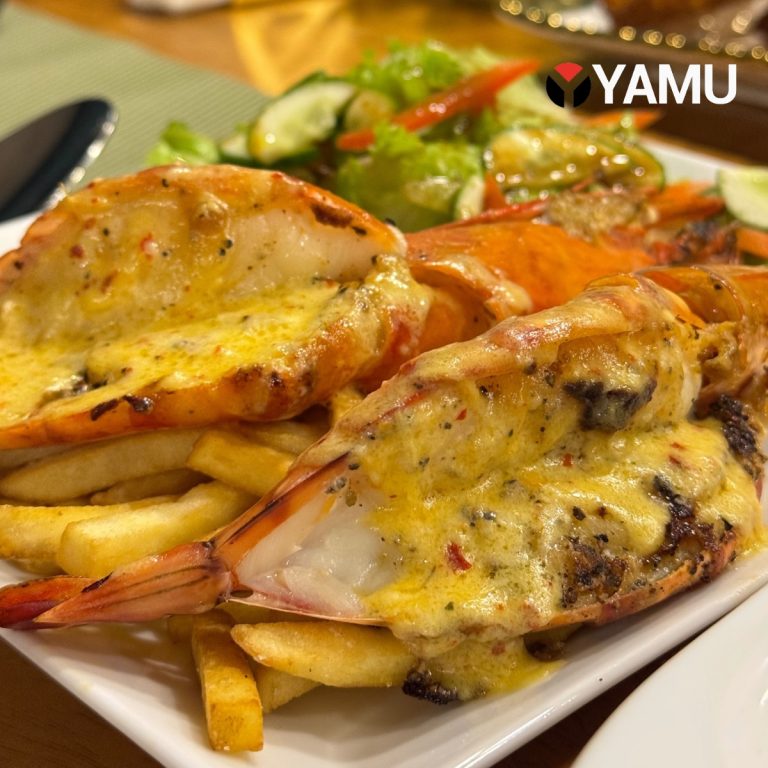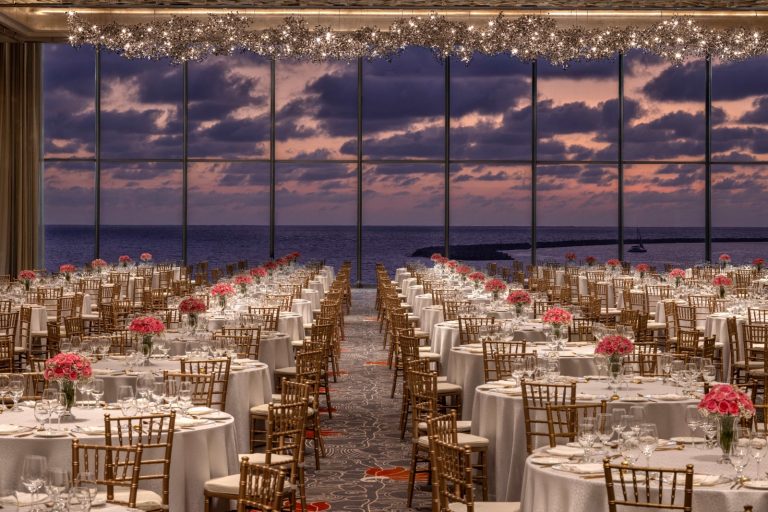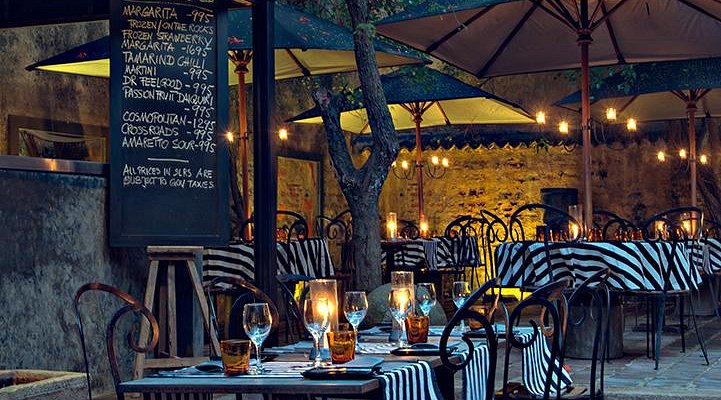Why is YAMU reviewing a restaurant in London? Well,
- We wanted to know if Rs. 800 hoppers are ever worth it.
- Hoppers is possibly one of Soho's hottest, busiest eateries right now. So…#LankanPride!
- Why are our little island's little crispy hoppers is enthralling the hipsterati of London? Are they even doing it right?
- We've covered New York's Sigiri and Singapore's kottu before, so why not.
- We wanted arrack.
The Hoppers reputation precedes it, as does its queue. I had serious reservations that they didn't take reservations, especially after eyeing the queue of well-turned out posh Londoners in quest of Instagram-worthy non-Indian curry snaking down Frith Street (try saying that name without spittle-spraying someone). You can generally expect a 20-30 minute wait, but there's plenty of amazing bars around to booze or snooze in till they call you.
Here's a picture of the line to enter at 4:30 PM on a Saturday, the only time we could get a table.
Dining
Our starter was from the "short eats" section, a moniker that brings us glee and British reviewers consternation. We opted for the hot buttered devilled shrimp (£7 or Rs. 1400), which I chose out of concern for its split personality issues (a good way to pick fusion food, a bad way to pick boyfriends). I mean, is this devilled prawns or is it HB prawns? Turns out it's neither, it was a soft and squishy and wet sort of dish with lots of capsicum and spice. I wouldn't call it your average bar bite either, as the flavours were excellent and the prawn well cooked. The portion was minuscule though, with 5 prawns.
We also opted for a few hoppers, plains at £4 (Rs. 800) and egg at £4.5 (around Rs.900) each. These beat even Kaema Sutra's heatedly-discussed prices, although they're about equal in size. The hoppers themselves were perfectly executed, with the right ratio of fluffy soft inners and crispy wafer-like outer bits. They came with little portions of well-prepared seeni sambol, pol sambol, and unfathomably, mint chutney. They also serve up string hoppers and dosa.
We then tried a Seafood Kottu (£ 12 or a whopping Rs. 2360), which looked nothing like a kottu, but tasted great. With buttloads of greens, mussels, soft shell crab, prawn, cilantro, and even karapincha, the carbs were difficult to find in this rather cacophonic mix. This definitely wasn't chopped up roti either, it seemed more like cut up bits of tagliatelle (I was too hungry to investigate further, sorry). Again, this was tasty but in no way a proper kottu.
The best/worst/most hilarious part of our entire dining experience was the kari. No, really. There was a menu section for "kari", which is the original Tamil term for curry. "Kari" is an oft-used Thai/Indonesian transliteration of curry, but it sure isn't used in Sri Lankan menus, Sinhala, or common parlance. In fact, I'm pretty dang sure saying "kari" in Sri Lanka is reserved for shouting matches at boys' schools and/or Parliament. If you're a bemused foreigner reading this, I'd rather you learn what kari means here than by asking an unsuspecting tuk tuk driver and consequently dying in a fiery car crash.
Hopefully, the choice of word isn't an intentional disclaimer, as this wouldn't be unheard of in London. Either way, we ploughed on and ordered a Black Pork Curry and then later on a Chicken Curry (both at £7 or Rs. 1400). The portion sizes were unimaginably small, tiny beautiful pots with about 3 spoonfuls within.
The pork was tender, tasty, and well-marinated, but with not enough goraka, which made it more of a brown pork curry than black (must have lost its tan moving from sunny Sri Lanka to England). The chicken was also excellently prepared, absolutely soft and juicy, and incredibly delicious. However, again, it tasted more Indian than Sri Lankan because clearly, the chefs showed too much restraint when it came to the coconut milk and spice. True Lankan chicken is meant to drown in the stuff, not coyly stick a toe in like it's Mount Lavinia beach and it doesn't want to get in because hooligans are watching. Sri Lankan food is all about committing to bold, over the top flavours, not flirting with them.
Drinks
Their drinks menu is concise, with about 10 inventive Lankan-infused cocktails and a few softs like wattalapan milk and peach fizz. There's also little cans of Lion Lager at £4.5 (around Rs. 900). For about 250 ml, this is exorbitant by both London and Lankan prices, but that's the price you pay for nostalgia. We opted for the Ceylon G+T and the Arrack Attacked (both at £8.5 or Rs. 1700, average prices for a Soho cocktail).
Our Ceylon G+T featured that fancy pants Poached Pear Colombo 7 Gin, along with splashes of sweet basil, vanilla, and tonic. It's a refreshing, rather sweet drink unlike anything we've had here. The Arrack Attacked (why is it past tense?) was a beautiful bleeding sunset colour, and had the usual ingredients in your average AA, with a few splashes of bitters added in, just in case you forgot you were in England.
Service
The service is excellent from the get-go. From the super polite and efficient polo T-shirt bedecked chaps who put our names down on the wait list, to the other various waitstaff who took our orders and brought stuff out, we were treated very well and never rushed, despite how busy-busy they were.
The staff has also clearly been trained to explain, recommend, and suggest dishes and drinks, which I thought was interesting. Especially one earnest fellow who tried to explain an arrack & ginger beer to me as "kind of a Moscow Mule". An accurate, if hurtful, oversimplification.
Also everything came out steaming and fresh in a negligible 5-10 minutes. Impressive!
Ambience
The decor isn't over the top tropical or crass. Tasteful rattan ceilings, ubiquitous vintage Ceylon posters (you can leave Sri Lanka behind, but never Barefoot, as it appears), yaka (devil) masks gently scaring the poop out of you whilst guiding you to the bathroom, it's all done quite well.
The music is distinctly South and North Indian, ranging from ghazals to squeaky old timey Tamil love songs. Where is the baila, you heathens??
Ownership & Cultural Appropriation
You won't be surprised to hear that the owners aren't Sri Lankan, or even Sri Lankan origin. They're a bougie Indian-origin family company, the Sethis, that also run a couple of other hugely successful London restaurants, like Gymkhana and Trishna.
The chefs are Indian too, but we heard (via vague Sri Lankan-style rumour, not verified fact), that they were flown down to Sri Lanka to train for a month or so. While you can tell that the names, and ideas behind dishes are Sri Lankan, the execution definitely wasn't totally authentic.
It would have been a great idea to actually use a Sri Lankan chef (anybody's sweet old ammi would have done the job with glee), or have a Sri Lankan partner, or give part of the proceeds to a Sri Lankan charity, or in any way give back to the Sri Lankan community since they're profiting off the culture. However, as Chandana points out, it's not like the bazillions of locally owned pseudo-Chinese restaurants in Colombo ever cared about Chinese communities' welfare so this may just be good old hypocrisy.
But on the positive side, this is almost benign "culture borrowing" – the hoppers are relatively accurate (not as rude a caricature as their bathroom signs), done respectfully, and it brings Lankan food to probably one of the world's most discerning culinary audiences with great results. So my opinion is divided. If yours isn't, the comments section is tingling with anticipation.
Overall
Hoppers is definitely a good experience, albeit at about £60 for a couple. Set in one of the world's most vibrant districts, it's complete with excellent service, understated decor, and a buzzing crowd. Your typical Londoner loves the exoticism of the fare, and your typical Sri Lankan would just be excited to have our beloved hoppers in a hipper part of the world. Ok, so Hoppers isn't 100% authentic. But after some 3 centuries of colonisation, neither are we.
So if you're in London, head here. Just don't ever ask your Sri Lankan significant other for some rice and kari.





















